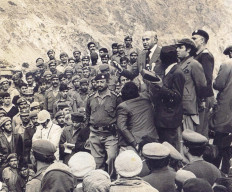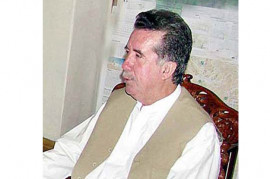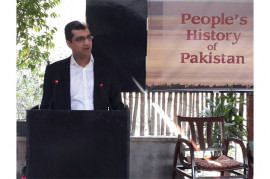
A feudal lord from Sindh, Bhutto founded the Pakistan Peoples Party (PPP) on September 1, 1967, after parting ways with the military ruler Ayub Khan. The party’s manifesto was penned by former bureaucrat JA Rahim – a known communist.
Political musings: Real power deals of Pakistani politics—I
The National Awami Party (NAP), a coalition of leftist groups that had emerged as a significant political force in the 1950s, had by then split into the pro-Soviet Wali group and the pro-China Bhashani faction. Afrasiab recalls ideological differences creeping up between the two camps.
The Maoist model believed the suppressed farmers/peasants should revolt against capitalism. Once they gained power in the rural areas, the trade unions in the cities would join them to bring about a socialist revolution.
The Soviet camp, however, contended the situation in societies like Pakistan was not conducive for a direct socialist revolution. They believed a society has to go through a social formation before capitalism could be transformed into socialism.
“A socialist revolution was not possible as it needed a strong working class,” Afrasiab said. “Our working class was limited, weak and disorganised.”
The ideologues then gave the concept of a National Democratic Revolution. A coalition of working classes had to adopt a non-capitalist path of development, where industrial development had to come through investments from the socialist camp. Once this goal of industrial development had been achieved, the society would be ready for a socialist revolution.
Real power deals of Pakistani politics
The divided leftists, however, failed to take advantage of the emerging anti-Ayub public sentiment. While they were unsure, Bhutto emerged as a symbol of resistance. The western-educated Bhutto entered the fray with popular slogans of socialism.
“His past did not inspire socialism,” Afrasiab recalls. He joined hands with some leftists, mostly from the Maoist camp. The student union of the leftist faction, the National Students Federation (NSF), also supported the PPP and many NSF leaders like Meraj Muhammad Khan joined Bhutto.
One of the reasons for the PPP’s growing strength after 1971 was the joining of a number of Bhashani faction leaders.
PPP’s socialism
The NAP-Wali, of which Afrasiab was a member, differed with the PPP’s philosophy. The party thought Bhutto was not really following the path of socialism.
The PPP’s agenda was a mixture: Islam is our religion, socialism is our economy, democracy is our politics and people are our source of power. “We did not see any scientific synthesis in all that,” said the former senator.

After the 1970 elections and the breakup of Pakistan a year later, the PPP formed the government in Centre, Punjab and Sindh. NAP formed provincial governments in Balochistan and the NWFP, now Khyber-Pakhtunkhwa.
But in March 1973 when Bhutto dissolved Sardar Attaullah Mengal’s NAP-led government in Balochistan, NAP also resigned from the K-P coalition government. Its leaders were put behind bars when they protested against the PPP.
Afrasiab claims the country’s powerful establishment made a visible policy shift after the creation of Bangladesh. “Instead of realising that East Pakistan separated from us because we did not give them their due rights, they thought it was because we failed to Islamise Bengalis,” he said.
He also believes General Ziaul Haq is not solely responsible for the burgeoning religious extremism in Pakistan. “Long before Zia’s martial law of 1977, promoting religious fundamentalism became a part of state policy and some powerful circles within the establishment espoused it was the path for nation building,” he recalls.
NAP was finally banned in 1975. It resurfaced under the name of National Democratic Party but disintegrated even before it could launch on the national stage. Fractionalisation of the left continued before the entire movement went into disarray in the early 1990s.
How the PPP got played?
Afrasiab, who intends to write a book on the subject, claims the establishment encouraged Bhutto towards Islamisation. “Through people like Maulana Kausar Niazi, Bhutto was made to believe that he had tremendous potential to become the leader of the Ummah,” he said. “It was a coordinated strategy.”
Political musings: External, internal factors led to fall of ZAB - II
The establishment created a situation where Bhutto’s government had to take a right-leaning approach and at the same time right-wing parties became his main opposition. This convergence ultimately culminated in 1977 with Zia’s martial law.
Karachi, the centre of progressive ideology where most leftist theoreticians were based, was gradually pushed into ethnic politics. The trade unions were cornered and the city that was once the pedestal of leftist movement became hostile for them.
Published in The Express Tribune, November 9th, 2015.































1714024018-0/ModiLara-(1)1714024018-0-270x192.webp)









COMMENTS (1)
Comments are moderated and generally will be posted if they are on-topic and not abusive.
For more information, please see our Comments FAQ